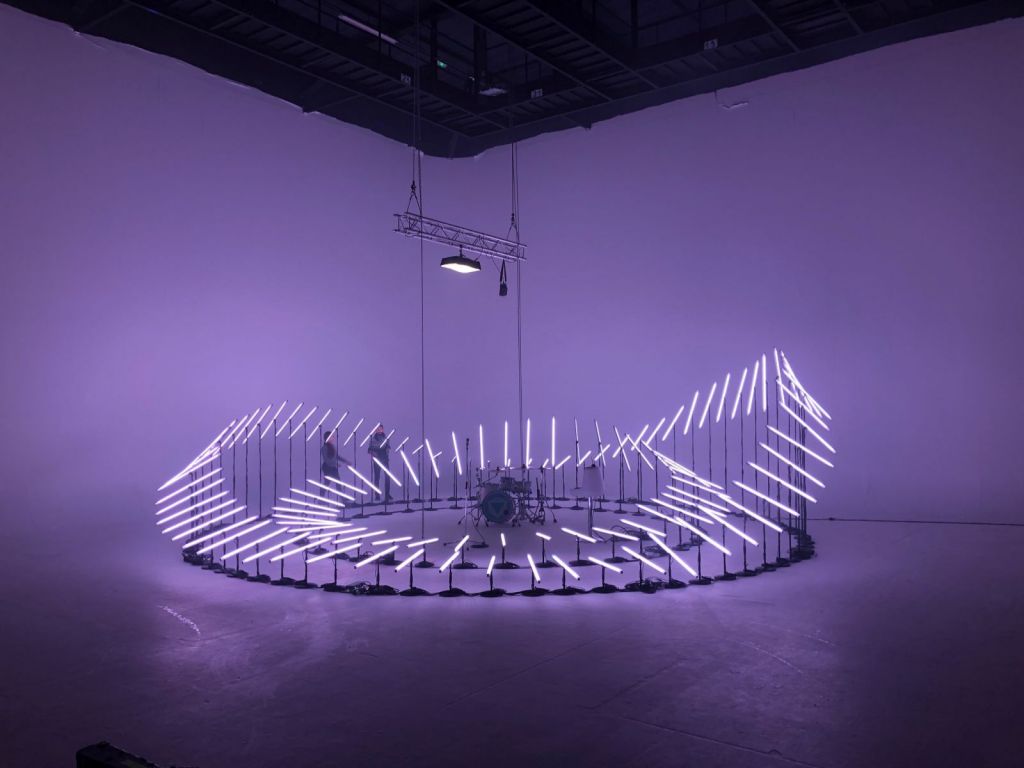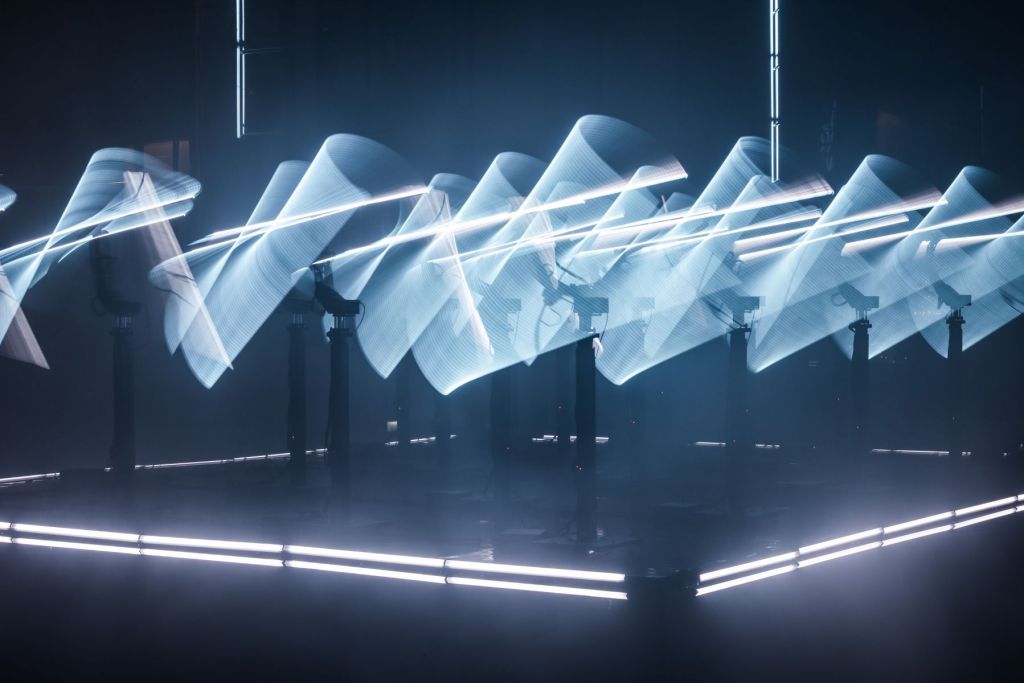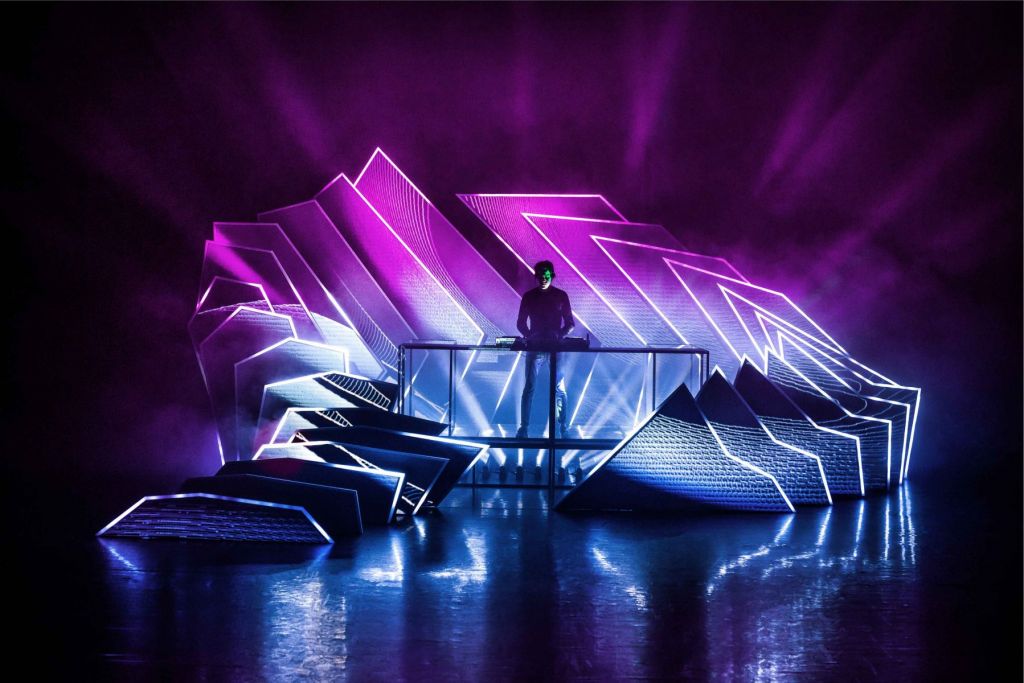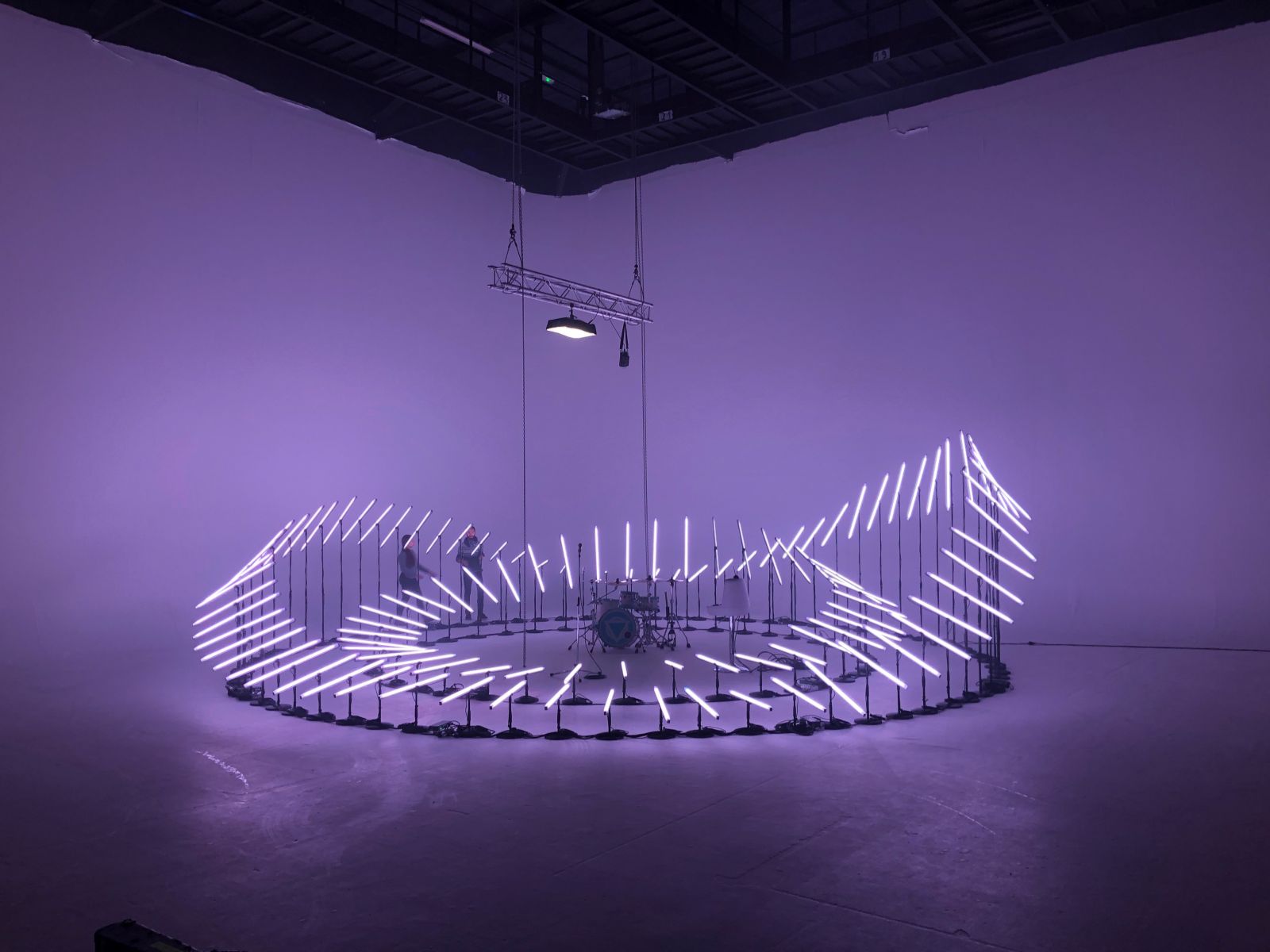Interview by Silvija Daniunaite

Spanning various creative and professional backgrounds, Collectif Scale is a Paris-based multidisciplinary collective composed of young artists and technicians whose work revolves around interactive audio-visual experimentations for live performances. Their varying, yet complementary, passions for motion design, robotics, programming, LED mapping, light architecture and several other disciplines morph into cutting-edge audiovisual installations, breath-taking museography projects and innovative set designs.
Through a synthesis of technology, art and music, the members of Collectif Scale seek to unearth links that unite music and visuals, light and architectural design, entertainment and contemporary art, nature and the future, man and machine. Over 10 years of mastering its craft, Collectif Scale has developed an intimate artistic language of its own, celebrating the raw force of nature whilst embracing technological progress and its potential to bring forth creative innovation.
A poetic audiovisual meditation on nature yet untouched by humankind, one of Collectif Scale’s most lauded installations – Physis – offers pure sonic immersion to the public, showcasing 10,000 LEDs and 26 large plates in the shape of a rift, which interacts directly with electronic music played by DJs.
Indeed, in their immersive wonderland of augmented art, created out of ever-changing sonic landscapes and dynamic visual objects, the public is no longer merely a passive observer, becoming instead a key actor in Collectif Scale’s techno-poetic paradise, with the opportunity to experiment and experience the freedom of unhindered exploration.
This playful and sensitive aspect of creativity is at the heart of Scale’s creative philosophy, alongside their inexhaustible thirst for new and unknown terrains of technology use. Bringing together their individual knowledge and skills, the members of Collectif Scale have dedicated their creative lives to enhancing the music scene with mesmerizing light designs and immersive visual art, their work being an ode to imaginative play between different artistic mediums.


Behind Collectif Scale stands a highly talented team of ten people spanning various professional and artistic backgrounds. Your work juxtaposes motion design, research, robotics, programming, LED mapping, light architecture and several other disciplines to create mesmerizing scenographic installations. Could you tell us more about your creative philosophy? Given the many creative influences that guide your artistic practice, how would you categorize the work of the Collectif Scale?
As Scale is a collective composed of members from different origins, backgrounds and personalities, there’s no other choice than to produce installations by mixing disciplines, mediums and ideas. Each production is the result of the combination of those multiple ideas brought together. We don’t have any rules but try to respect some guidelines: let’s do it with fun and desire; otherwise, [let’s not]; let’s do something [exciting] and new, otherwise [let’s not]; let’s do it by using new technologies, even if we don’t know how they work, otherwise [let’s not].
Basically, Scale is not the name of a technology company or agency. Scale is just the pseudo of a visual designer, and this designer happens to be a collective of friends. As we produce different kinds of installations, from scenic scenography for live shows to pieces for art exhibitions, we don’t like so much to describe ourselves as artists but as creative technicians or just scenographers.
You often use the term ‘augmented art’ when speaking of your work. For our readers who are less familiar with the concept, could you tell us what the term means, where it is situated within the arts landscape and what it stands for within the context of your own creative philosophy?
People are generally talking about digital art, but we think this term doesn’t make sense today because most art pieces are now produced using a digital process. Digital art sounds to us like a very old name from the 2000s, so we decided to talk about augmented art because it seems more appropriate to our work. The idea of augmented art suggests that we create something by using and stacking different mediums. For example, regarding our installation Ammonite, the first layer is the architectural design – two rings of 112 strips of 1m, precisely organised to describe a mathematical and organic structure of 10 m.
Then we add a second medium – light – because those 112 strips are made of RGB LED strips. In the end, the global process is to enhance a design and try to make it come alive with an additional and interactive medium. In that case, I think we can talk about augmented design. In the latest version of Ammonite, we can differentiate more than 2 layers. First, we start with the architecture, then we add interactive light, and then the interactive music generated by a mechanical piano is converted into a kind of arcade game for the audience.
Ultimately, we can identify 4 mediums: architectural design, light, music and video game. During the last weeks, we have discussed the idea of augmented art. Then, by analogy to electronic music, we probably found something better: electronic visual art. It seems to be at the same time, a very generic and precise term and probably more representative of our work.
Speaking of how human beings experience and understand the world, both visual arts and music have a powerful potential to build and shape contemplative spaces for the public, to bring forth an emotion, conscious or unconscious. Is that something that Collectif Scale thinks about when developing its projects?
When we [start working] on something new, we think about the audience and its reaction. But in the end, we don’t think too much about the emotional or contemplative potential. As we are a collective, we have probably become our best audience. What’s most important to us is to surprise ourselves and make each other happy. Then, if a creation seems to us contemplative and emotional, it can be too for the audience. If we are talking about emotion, the most important thing for us is to produce something playful, simple and accessible.
We don’t want the public to have to understand something or engage in a complicated process of reflection to enjoy a piece. Even if each installation is full of meaning and reflection, the physical impact is the most important. The form is more important than the content. It probably sounds strange, but it also explains why we love video games, roller coasters, funfairs, etc. The emotional impact is direct and simple. The public only has to live and play with it. We only want the audience to smile after seeing our installations, as we are very attached to our work’s entertaining and playful aspects.
Physis is one of your most lauded installations. Made out of 10,000 LEDs and 26 large plates, which interacted directly with electronic music played by DJs, Physis offered a mesmerizing audio-visual experience for the public. What were the driving forces and inspirations behind the project? How was the dialogue between the visuals and the sound determined?
Physis is like a mountain, or more precisely, like a rift. A rift is a break provoked by the movement of the ground and the tectonic plates. It’s a very inspiring topic for us since this natural phenomenon results in the unpredictable creation of shapes. We just decided to explore that idea and design an installation to celebrate the force of nature. Then we gave it life, or the illusion of movement, by using light and video mapping. Topologic, Ammonite, Nautilus, Physis, [and others] – the elementary and original nature inspires all these installations before human appears on Earth.
As described with Ammonite before, Physis was elaborated on by adding layers, or mediums, to create a full poly visual object. The first step, always the longest, is to create the architectural design in the case of Physis – a modular scenic installation. We had a lot of technical constraints: maximum weight, modularity of the size, security, fire resistance, assembly time and others. Integrating these constraints as soon as possible into the artistic process is imperative.
When we are satisfied and confident with the structure, made [out of] wood in the case of Physis, we think about augmented visual mediums (e.g. light or video) and imagine how they can reinforce and improve the design. In the end, the light and the video mapping are generated similarly by using a dedicated program developed by us.
[It] allows us to create fine interactions between light, video and sounds. As Physis is an installation dedicated to living electronic musicians, we made a choice to develop a program controlled live by a «technician-artist» from Scale for each presentation to play with the musician on stage to establish a real dialogue. We also think that AI or an autonomous program wouldn’t be as efficient as a real human brain in that precise case because we don’t know the music in advance. A real person can also include the audience’s mood in their play.
CODA is yet another installation of yours that received highly positive feedback from the public worldwide. It showcased a futuristic performance by twenty robotic arms, each equipped with 1-meter-long LED bars. Can you tell us more about the intellectual process behind the project and the themes you wanted to explore? Where did your visual and conceptual inspiration come from?
The starting point was to work around the idea of lighting choreography and to create a piece [resembling] a dance show or a ballet, where we would replace the body of dancers with robots and light. In the end, many people see a reference to pop culture in CODA, including Star Wars and video games. They are totally right because CODA is probably the result of all these inspirations from very different cultures.
CODA perfectly synthesises the last 10 years of learning and experimenting. Even if we had the idea 3 years ago, we could never have produced it because of our lack of skill and the accessibility to robotic technologies. We are happy because it marks the end of a period and the start of something new and exciting. CODA is probably our best cocktail of poetry and technology.
What is your chief enemy of creativity?
The enemy of creativity is money. Because when you create only for money, you probably produce something very boring and impersonal.
You couldn’t live without…
We could live without technologies, robots and video. But we couldn’t live without nature.






